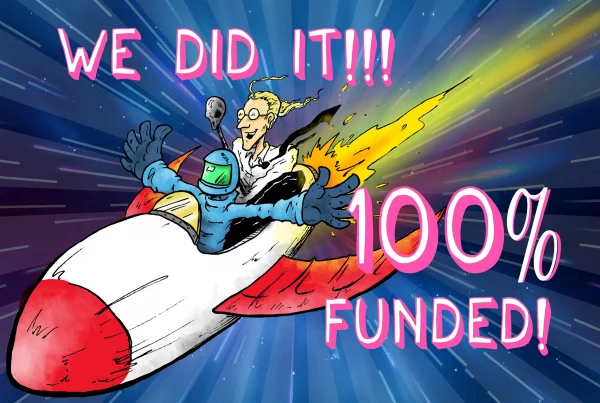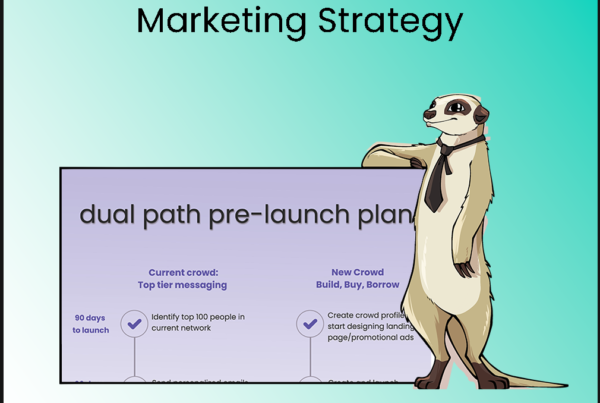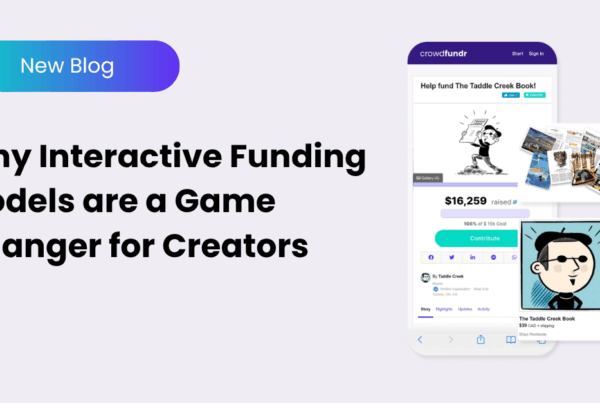The Crowdfunding Pitch
Here’s a secret: There is no single right way to write a crowdfunding campaign story, but there are more effective and less effective ways. And since our storytelling functionality is a significant feature setting Crowdfundr apart from other crowdfunding platforms, I trust you’re aiming for the more-effective side of that spectrum.
This is your project from your brand – we are just the vehicle to bring it to the world. So, what you write matters not only for this campaign but others you might do in the future. Do not take what I write here as set-in-stone commandments – they are guidelines. What works for you might differ from what works for others, I am just here to help you get started and map out your most effective story.
Themes of a good crowdfunding pitch
Crowdfunding success does depend on more than your project, though. This is essentially the opposite of traditional marketing: rather than ‘here’s my product, give it a shot,’ it’s ‘here’s the product I want to make, will you invest in helping me make it in exchange for the product later?’ Your job becomes a little harder because you must establish a good rapport with your customers before they ever receive anything.
To help with this, keep these themes in mind when writing your crowdfunding campaign story:
Trust & Transparency
Trust in you as a ‘seller’ is paramount to creating and maintaining relationships with your supporters, and you gain that trust through transparency.
I am not saying you must strip naked and bare all your skeletons for your campaign. I mean, you CAN if you really want to, but you might not find the type of attention you’re looking for…
Transparency means openness and honesty about every part of the campaign from creation to after your supporters receive their rewards. Trust means providing information that proves you are who you say you are. Here are some more specific tips:
-
- Continuous communication via updates, emails, comments on activity, and your social media.
- Admissions of mistakes or miscommunications
- Fast and clear explanations for shipping delays
- Quick responses to supporter questions/comments
- Linking social media profiles, pictures, videos, etc., to show who you are (within your realm of comfort)
Uniqueness
With thousands of campaigns out there and more starting every day, you must be clear on how you and your project stand apart. What is unique about your creation? Try to fit this uniqueness into as many parts of your story as possible.
-
- Do you do something out of the ‘norm’ for your category?
- Have you used unique materials, designs, or techniques?
- Is there a unique perspective to your creation?
- What makes YOU unique as a creator? And don’t say “nothing” (self-love alert!). Everyone has something unique about them.
This list could go on forever, depending on your project. Take a moment to sit and determine what is unique about you and your project.
Intrigue & Delight
Like it or not, you are a salesperson. And a few years in sales taught me that even the most boring item can be easily sold if someone is intrigued enough. Throw in the ‘good-feeling’ hormones that come with delight, and you have a customer.
Let’s put it this way – when you read over your campaign story, are you bored? Or are you entertained (even mildly)? Engage your readers with previews of your work, anecdotes from its creation, and anything you think will help a potential supporter feel excited enough to see what the rest is about!
Story Guidelines for your Crowdfunding Pitch
Again, these are more what you’d call ‘guidelines’ than actual rules (points to whoever knows what movie that’s from). Use these guidelines to ensure you have the type of information that your supporters want to know.
1. Catchy opening line
I suggest this for all kinds of campaigns across ConnectionPoint’s platform suite. You have no idea what sort of mood your supporters will be in when they land on your page. They could have just been talking to Aunt Tracy and now are in a Very Bad Mood. Not ideal for encouraging support.
Bring your readers into your space and your frame of mind with a catchy, relevant opening quote, rhetoric, or even screen-captured positive reviews or rewards that will make your reader go, “Oooooo, what’s this about?” and forget that Aunt Tracy asked them to fix their internet again.
From “Ghost Island – A Supernatural Horrow Graphic Novel” by Afterlight Comics
2. Background
What started this idea? Are there any interesting anecdotes that will help your supporters connect with you or your project? Why do YOU love it? Don’t go too in depth, but a few lines on your project’s origins helps to bring supporters into your world.
3. Project description
Now’s the time to get into the good stuff! Here are some points to consider (but note that not every point will apply to every campaign):
-
- A concise, gripping description
- What makes it unique/special/important?
- What do your supporters NEED to know about you and your creation to feel intrigued, delighted, and secure in supporting you?
- What problem are you trying to solve, and how is your creation a solution?
- What are two or three of the more important values of your creation? *Crucial if you’ve invented something to solve a problem
- What are some relevant specs the supporter should know?
- What different options are available?
Check out this campaign by One Tin Soldier – their story has many of the aspects listed above.
4. Identify your target audience
Not everyone is going to love your project (sorry to burst that bubble). By identifying who would love your project, you filter out the low-hanging fruit to make picking much easier. This part might be easy for you, it might be difficult.
For some, a project might target a certain demographic, and you can determine who that is by doing customer profiles to identify who your demographic is and why they’d love your project. If you’ve never done a customer/supporter profile before, simply do an internet search for ‘customer profile template’ and follow along with one you like.
For others, you could compare your project to another, more familiar piece of work. For example, I’m writing a novel in the style of magical realism, which is just starting to become more popular as a genre. If I ran a campaign for it and simply said ‘You’ll love this if you love magical realism!” it wouldn’t likely attract much support. You can know of the genre without knowing its name. So instead, I could write something like “fans of Alice Hoffman will adore the light mystical whimsy of this story.”
From: “Backstory One-Shot Comic by Ryan K Lindsay, Jen Vaughn, and Teo Acosta“
5. Identify how your supporters help with their contribution
By this, I mean:
-
- What is the impact of their gift on your overall ask?
- What are the costs to create? Why did you choose this goal specifically? Can you break it down for the reader?
- What can they receive in exchange for their contribution?
This is where you get to highlight the best bits about your rewards, and perhaps discuss stretch goals and bundles if they work for your project. Do not use these because you think you have to, these are tools at your disposal to help drive further contributions toward a larger goal. If you are just starting out with your first campaign, I highly recommend keeping it simple. This is for your own stress levels as much as it is for success!
Who doesn’t love a good pie chart?? From “Backstory One-Shot Comic by Ryan K Lindsay, Jen Vaughn, and Teo Acosta“
6. What is going to happen?
Since crowdfunding means paying for a product before it’s ever made (usually), supporters are going to have some hesitations. To remove all roadblocks between your supporter and the completed transaction, consider a section explaining exactly what happens after they hit the ‘Contribute’ button (or claim a reward). This can include:
-
- Is this campaign ‘All or Nothing’ or ‘Keep It All’?
- What is your timeline for printing/manufacturing? Delivery?
- What pricing model did you choose and why?
- Are there any risks involved? (Particularly important for AON campaigns)
- Do you foresee any challenges?
From System Error 1 & 2 – a sci-fi comic with robots by Blue Fox Publishing Limited
7. Call to action
Don’t forget, crowdfunding is about SHARING. Yes, you want your supporters to claim a reward and support this campaign. But one person could contribute $10 and inspire $1000. Ask for the share and make it super easy on your supporters by explaining how.
From “BEAM – From the Stone 27 creators
Other points to consider for your crowdfunding pitch
-
- An FAQ, which you can even give its own tab
- Environmental practices you’re considering. Sustainable practices are a big hit with today’s supporters (as well they should be).
- Use headers, pictures, and other media to break up your story and make it visually appealing to read.
- Use your Organization and User Profiles as landing pages for more information about yourself or your brand/company!
If you need help navigating the story editor, start here.
Happy writing!
Shan





